Comb-footed Platform Spider:The Comb-footed Platform Spider is named both for the comb-like structure of its feet and its platform web.The comb-footed spiders, also known as cobweb spiders and tangle-web spiders (family Theridiidae) are a large group (over 2000 species in nearly 80 genera) of haphazard web-builders found throughout the world. The characteristics of this family of spiders are that they build tangled, haphazard webs and have a comb of serrated bristles (setae) on the feet of the forth leg. The family includes the genus Latrodectus, the notorious widow spiders.
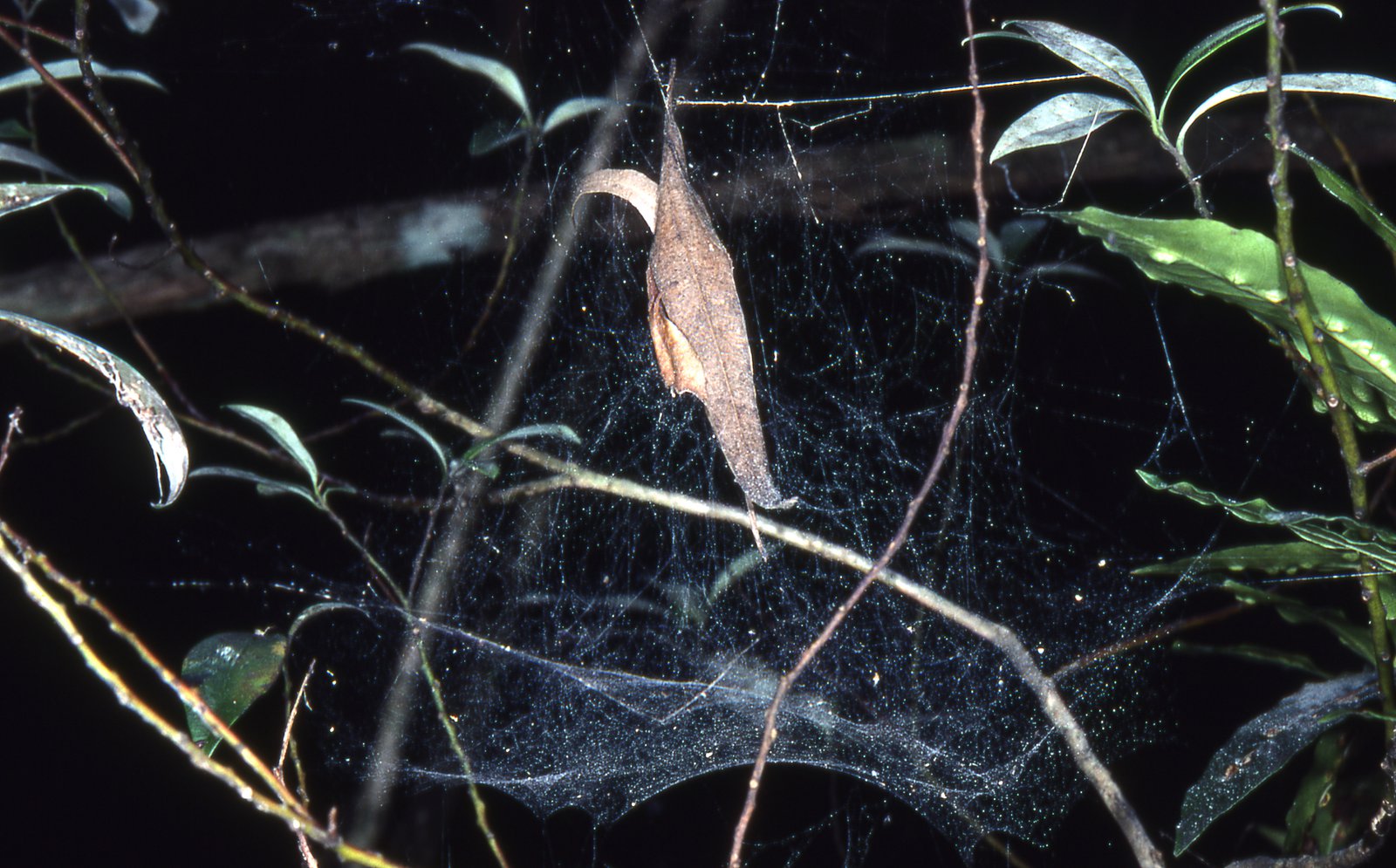
What do Comb-footed Platform Spiders look like?
Identification
The Comb-footed Platform Spider has a striking patchwork colour pattern, but is best recognised by its moderately large, distinctive web with a leaf detritus retreat.
The Common house spider, sometimes called the American house spider, is an extremely common spider in North America, as its name suggests. There are several species of this genus, Achaearanea, sharing many common features. They build their tangled web in secluded locations, which can also house eggs contained in one or more spherical sacs. Their behavior on webs is quiet and efficient. They are generally dull in appearance, with patterns consisting of brown shades for coloration. Their average body size is a quarter-inch long. These traits combined allow the spiders to blend into the background and escape notice.
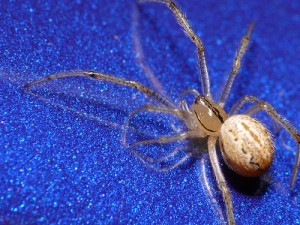
Where do Comb-footed Platform Spiders live?
Habitat and distribution
The Comb-footed Platform Spider is common in bushland and gardens in eastern Australia.
What do Comb-footed Platform Spiders eat and how do they mate?
These spiders are not aggressive. They are not known to bite people frequently, nor is their venom known to be dangerous to human beings. When removed from their webs their poor vision renders them helpless. Their only concern seems to be to find and return to their own web or build another one. They do not wander around inside houses except to find a secure place to build a web. Some people tend to fear all arachnids, but since these spiders in particular are harmless and their diet consists of pests such as flies and mosquito, tolerating their presence in homes is beneficial.
Many species of Common house spider share a body shape and size that makes them similar to widow spiders, which have venom that is classified as very dangerous. The widows can be distinguished from the harmless house spider by their glossy black color, with their bodies usually featuring a red hourglass or other marking.
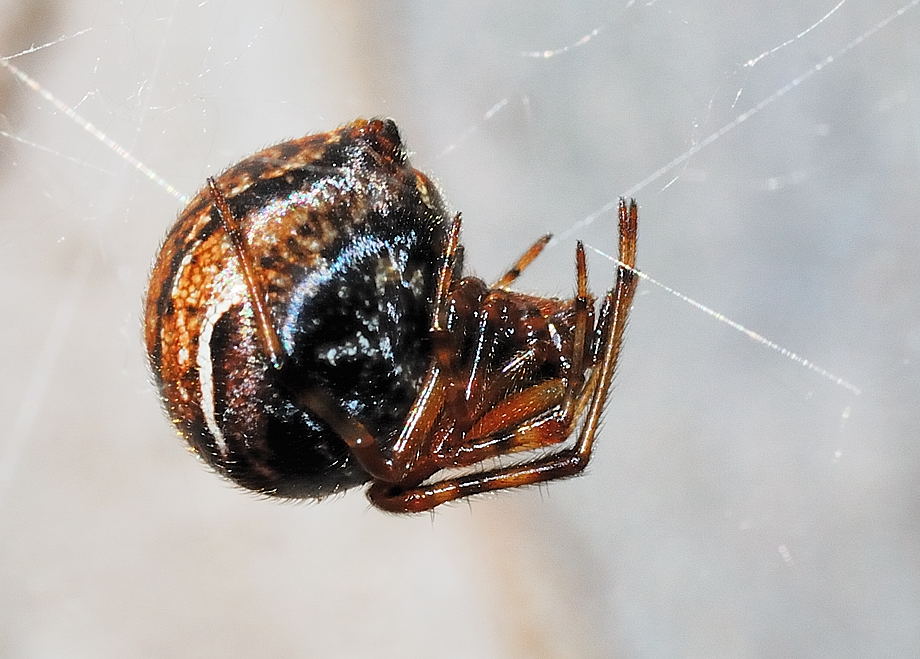
Feeding and diet
When insects fly into the ‘knockdown’ network of threads of the Comb-footed Platform Spider’s retreat, they fall through onto a silk sheet where they are seized by the spider.
Other behaviours and adaptations
The Comb-footed Platform Spider is not as specialised a retreat builder as the leaf-curling orb weavers; however a curled leaf may be used, or some leaf detritus may be loosely silked together. The retreat is placed in the centre of a network of threads spun above a horizontal, close-meshed silk sheet. These webs are usually built among understorey shrubs and low trees and are often seen in overgrown gardens.
Breeding behaviours
The egg sacs are placed inside the Comb-footed Platform Spiders’ silk retreat.
Comb-footed spiders (family Theridiidae) are not typically harmful to plants. They are generally considered to be beneficial because they prey on a variety of insects, including pests that can damage plants. Comb-footed spiders are known for their intricate cobwebs, which they use to catch and trap their prey.
While spiders in this family may occasionally build their webs on plants, they do not directly harm the plants themselves. Instead, they help control populations of insects that might be detrimental to the plants. These spiders are more commonly found in outdoor environments, gardens, and natural habitats rather than indoor settings.
It’s important to note that there are many species within the Theridiidae family, and individual behaviors may vary. Some spiders, even within this family, may exhibit aggressive or territorial tendencies. However, in general, comb-footed spiders are beneficial creatures that contribute to natural pest control and do not pose a direct threat to plants.
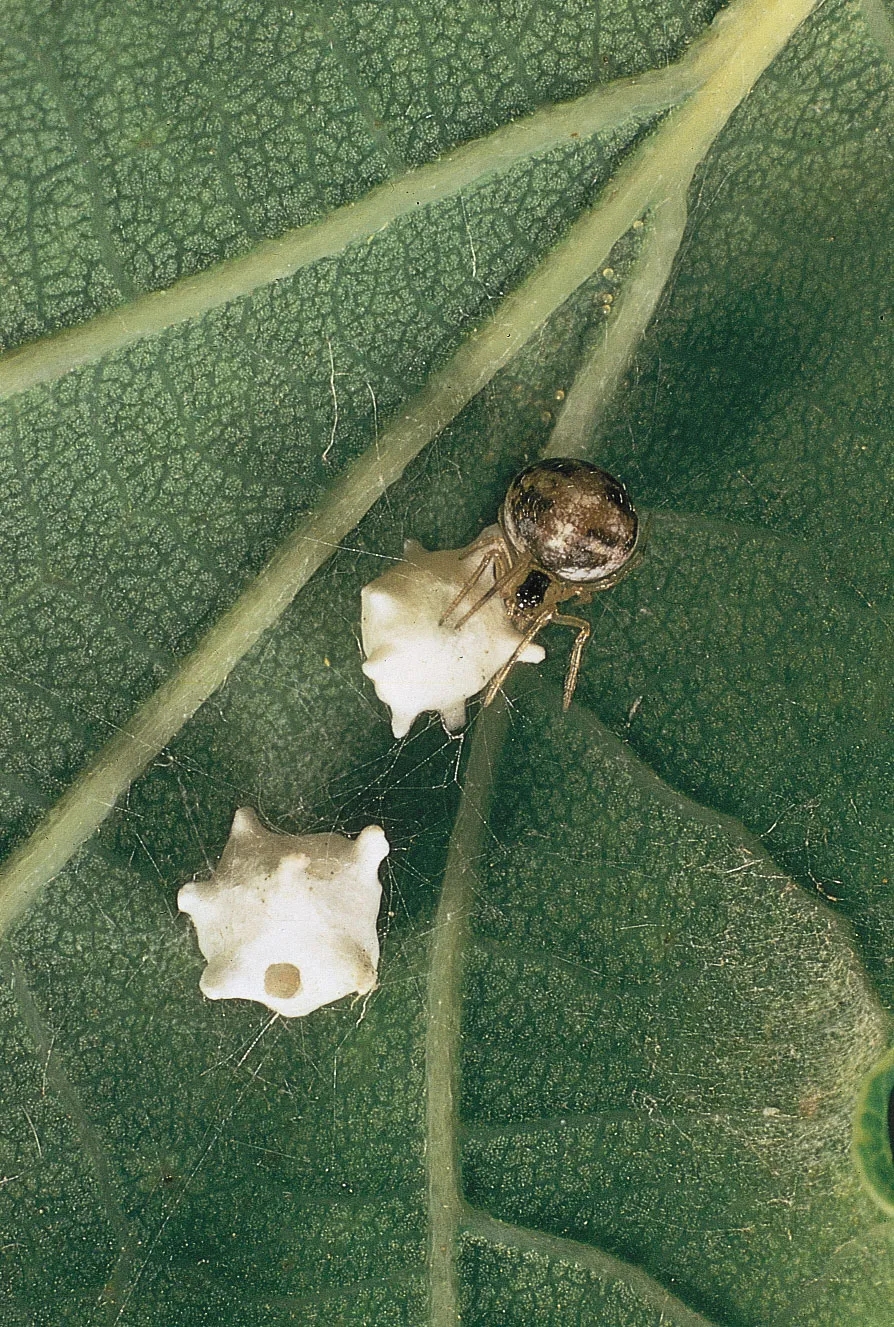
Predators
The complex webs of the Comb-footed Platform Spider harbour a range of other animals, from small moth larvae that scavenge along the silk lines to spiders that find prey in the outer parts of the web. Some of these are small prey stealers of the genus Argyrodes. However, they include one species that is a specialist predator on N. mundula. Argyrodes incursus is a small, jet black spider with a single red spot on its abdomen. Somehow, the smaller spider kills the larger N. mundula and eats it, finally making its own egg sac within the dead host’s retreat.
Family Theridiidae, Comb-Footed Spiders
They are commonly called Comb-Footed Spiders. Usually they build tangled webs under stones, between very close tree trunks, against fences or walls.
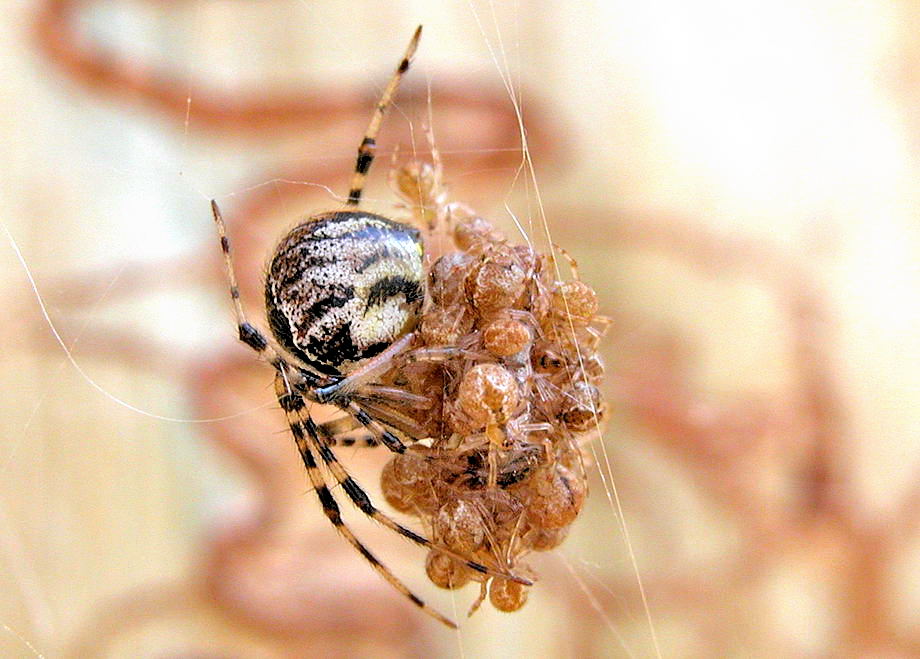
The spiders in this family are usually small in size. The distinguishing feature of this family is the row of spines on the tip of the fourth legs, which are used to comb out wide swathes of silk to entangle their prey. Their eyes are in two rows of four.
Comb-footed Platform Spider – Achaearanea mundula
FAMILY THERIDIIDAE
This page contains pictures and information about Comb-footed Platform Spiders that we found in the Brisbane area, Queensland, Australia.
Female, body length 7mm The Comb-footed Platform Spiders are common in Brisbane Eucalypt forest. Females are dark orange to dark reddish-brown in colours with white markings and pale patterns on the abdomen. It seems that those younger females are orange in colour. When they grow they become darker. Males are oranges in colours with white marking on top of abdomen.
